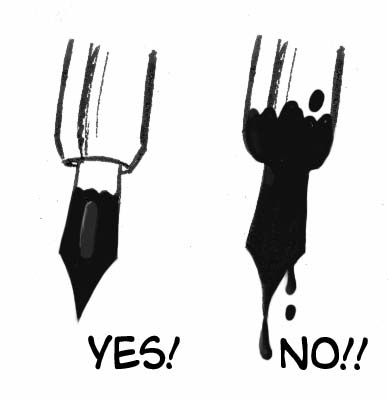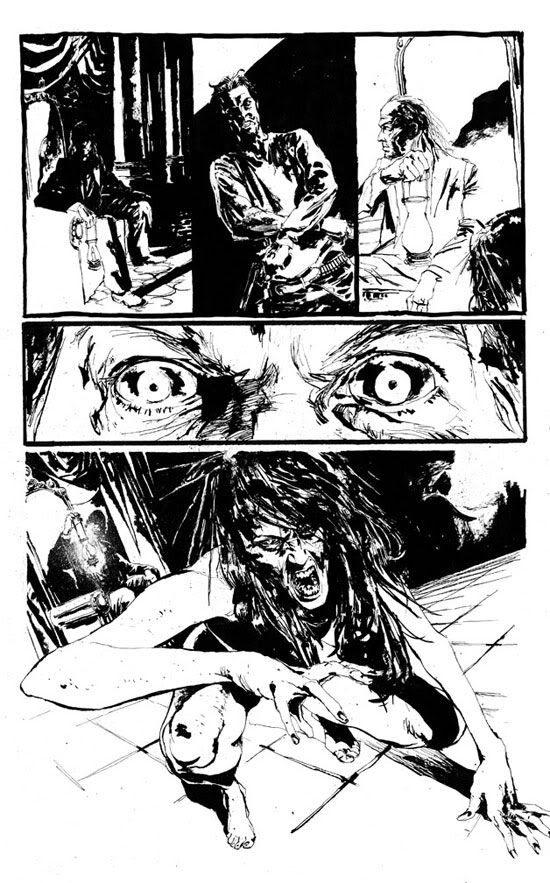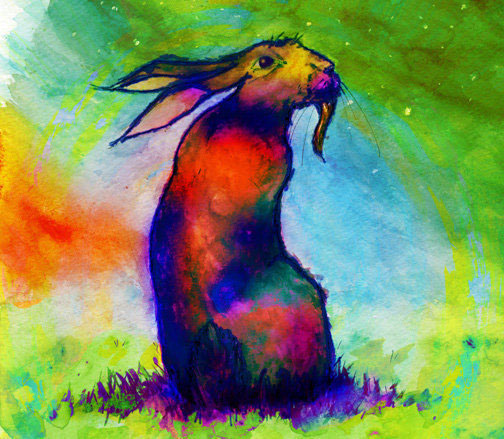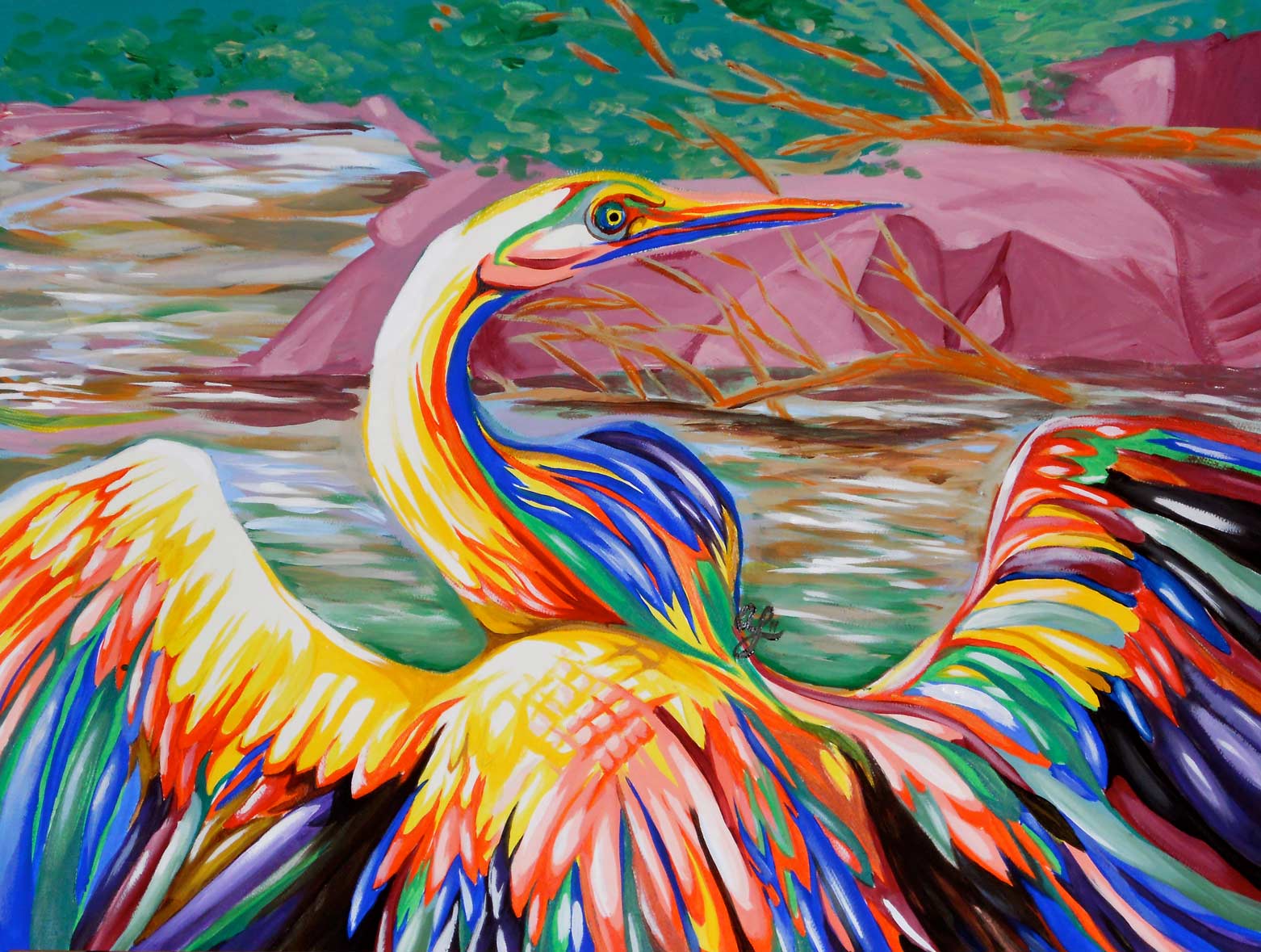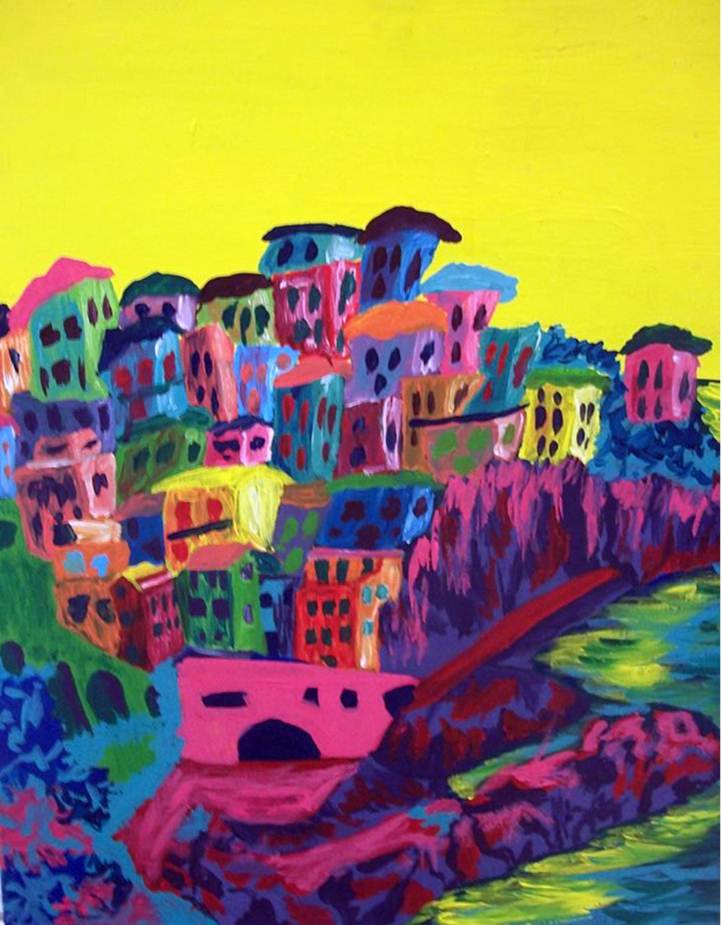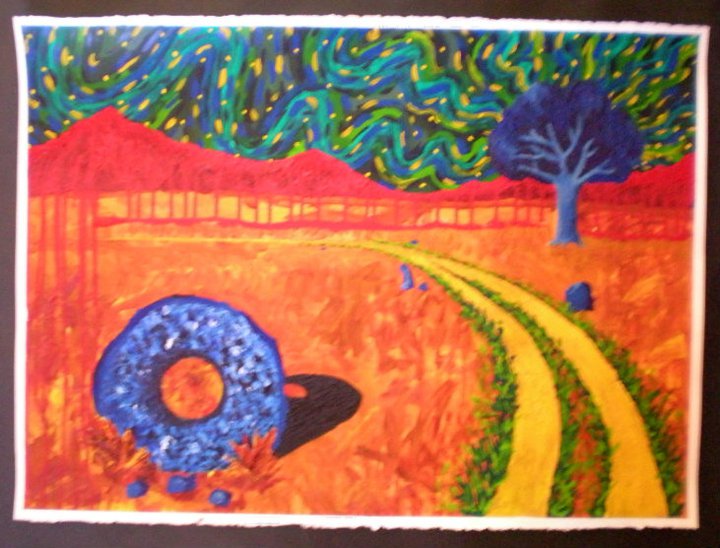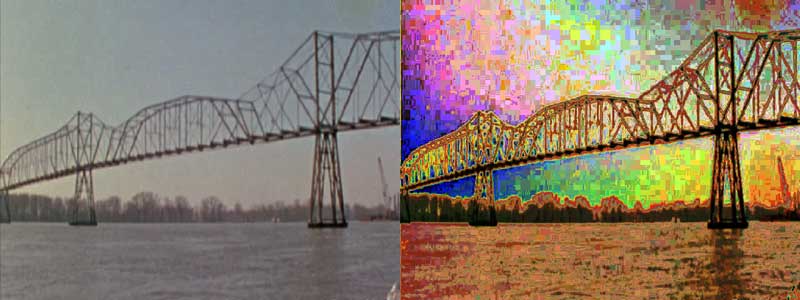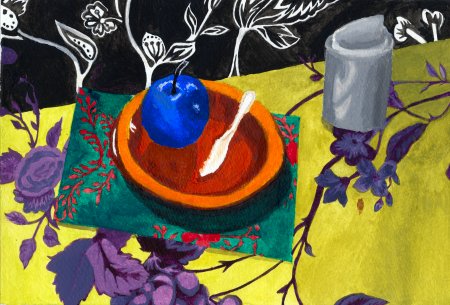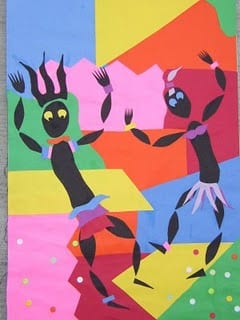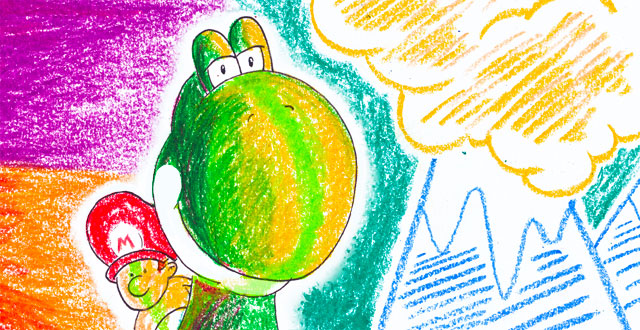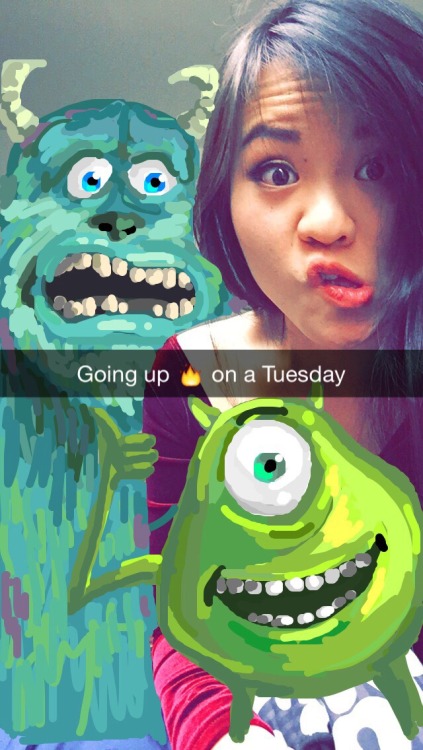Near the end of the first marking period, my Art 1 classes were working with watercolors.
When I was a student, I always found watercolors a little bit challenging... and with that, frightening. Watercolor is not as forgiving as acrylic; if you make a mistake, you can't just paint over it. My perception of watercolor paintings was also clouded by traditional images that I considered to be boring: little red barns dotting green fields under blue skies, or bouquets of flowers floating in empty space.
In order to make watercolors more fun and less frightening, I asked my Art 1 classes to dive into the world of experimental watercolor techniques. After explaining some basic vocabulary and how to properly prepare watercolors, students were provided with an array of brushes, salts, small objects, plastic wraps/baggies, tissue paper, crayons, oil pastels, charcoals, and rices. Some students got creative with other materials in the classroom, too -- one young woman decided to see if a glue stick would create a resist, and others played with a chopped up set of honors cords("rope" in the examples below. Our exploration began on Halloween, so we even did a few experiments with Silly String!
We discussed the differences between a scientific experiment and an artistic experiment. Students were encouraged to make a hypothesis for extra credit, drawing on their knowledge of how water interacts with different materials (and itself) and predicting how the pigment would be affected.
After completing 10 experiments (and 5 standard techniques), the students attempted to create 7-step value scales of shades and tints --- this was especially difficult with the low-quality watercolor paper we have stocked in the art room this year, but they did a great job.
Below are some of the results from our experiments:
Regular iodized salt formed thick, structural coatings when applied in large amounts and thoroughly soaked. Many students decided to use this technique to make "puffy clouds" on their paintings later.
Leaving objects on a wet wash can produce interesting effects:
Epsom salts apparently crystallize a while AFTER they dry... these results were not visible when they initially turned in their work for grading!:
While coarse sea salt produces an effect different than either above:
And of course, the coolest experiments we did... the silly string!
If you would like a FREE copy of the instruction sheets I made for the students, you can go here:
https://www.teacherspayteachers.com/Product/Watercolor-Practice-Experiments-Value-Scale-Instructions-1698056

